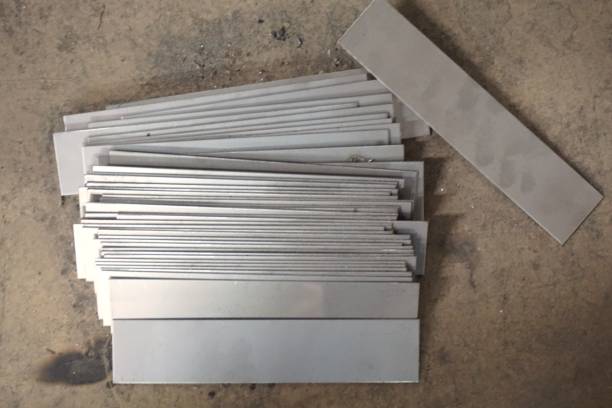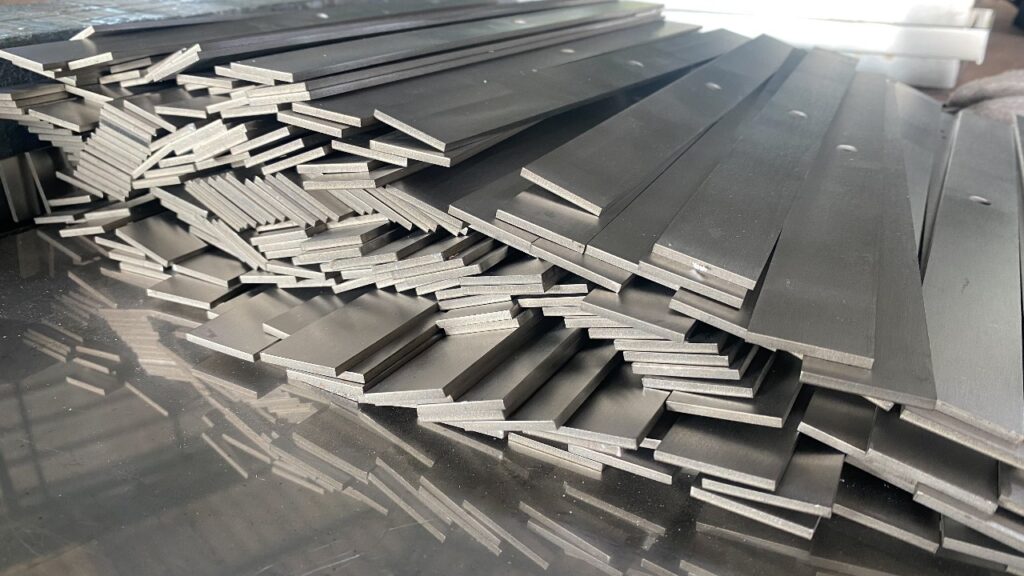Stainless steel flat bars are among the most versatile materials in construction, manufacturing, and design. Known for their durability, strength, and corrosion resistance, they are an essential component in various industries. This blog will explore the different stainless steel flat bar sizes, their specific uses, and why they are a go-to choice for many professionals.

What Are Stainless Steel Flat Bars?
Stainless steel flat bars are long, rectangular pieces of stainless steel that come in various widths, thicknesses, and grades. Their straightforward shape and solid structure make them suitable for a range of applications, from structural support to decorative features.
Common Grades of Stainless Steel Flat Bars
The most commonly used grades for stainless steel flat bars include:
- 304 Stainless Steel Flat Bar: Ideal for general-purpose use, this grade offers excellent corrosion resistance and durability. It’s commonly used in kitchen equipment, automotive parts, and architectural projects.
- 316 Stainless Steel Flat Bar: Known for its superior resistance to harsh environments, this grade is perfect for marine applications, chemical processing equipment, and outdoor structures. It’s often favoured when higher corrosion resistance is required.
These grades differ slightly in composition, but both are highly durable and versatile.
Stainless Steel Flat Bar Sizes
Flat bars come in a variety of sizes, making them adaptable to different projects. Standard widths typically range from 10mm to 200mm, while thicknesses vary from 3mm to 25mm or more. Lengths can be customised based on project needs, but standard lengths often range between 3 and 6 metres.
Choosing the Right Size
Selecting the correct size depends on the specific application. For instance:
- Thicker bars are ideal for structural support in construction.
- Narrower bars work well for decorative or lightweight applications.
- Custom lengths reduce waste and save time during installation.
Consulting with stainless steel flat bar suppliers can help you determine the best size for your project requirements.
Applications of Stainless Steel Flat Bars
Stainless steel flat bars are used across multiple industries due to their strength and resistance to wear and tear. Here are some common applications:
1. Construction
Flat bars are used in structural frameworks, supports, and reinforcements. Their ability to bear weight and resist corrosion makes them ideal for indoor and outdoor use.
2. Automotive
Stainless steel flat bars are used in the production of vehicle components, such as brackets, chassis reinforcements, and trims. Their durability ensures longevity in high-stress environments.
3. Architecture
Flat bars are popular in architectural designs for both functional and decorative purposes. They can be used in railings, gates, and modern facade designs.
4. Marine Applications
For marine environments, 316 stainless steel flat bars are preferred due to their resistance to saltwater and harsh conditions.
5. Manufacturing and Fabrication
Stainless steel flat bars are used in machinery components, industrial tools, and fabrication projects where strength and precision are critical.

Benefits of Stainless Steel Flat Bars
1. Corrosion Resistance
Stainless steel’s ability to resist rust and corrosion makes it ideal for use in harsh environments. This property is particularly important for outdoor and marine applications.
2. Durability
With excellent strength and toughness, flat bars can handle heavy loads and withstand wear over time.
3. Aesthetic Appeal
The sleek, polished appearance of stainless steel flat bars makes them suitable for decorative applications in modern architecture.
4. Versatility
With a range of sizes and grades available, flat bars can be tailored to fit almost any project.
5. Ease of Maintenance
Stainless steel is easy to clean and maintain, ensuring a long service life with minimal upkeep.
Working with Stainless Steel Flat Bar Suppliers
Choosing the right supplier is crucial to ensuring the quality and availability of stainless steel flat bars. Here’s what to look for in a supplier:
- Wide Range of Sizes and Grades: Reliable suppliers offer an extensive inventory to meet diverse project needs.
- Customisation Services: Many suppliers provide cutting, polishing, and other customisation options to match specific requirements.
- Quality Assurance: Look for suppliers who adhere to international standards and offer certifications for their products.
Frequently Asked Questions
1. What is the difference between 304 and 316 stainless steel flat bars?
The primary difference lies in corrosion resistance. 316 stainless steel flat bars offer better resistance to harsh environments, making them ideal for marine and chemical applications, while 304 is suitable for general-purpose use.
2. What sizes do stainless steel flat bars come in?
Our stainless steel flat bars can be customized to meet your specific requirements. Whether you need a particular width, thickness, or length, we can tailor the size to your needs. Contact us to discuss your specifications.
3. Can flat bars be customised?
Yes, many stainless steel flat bar suppliers offer customisation services, including cutting, polishing, and fabrication to meet specific project needs.
4. What industries use stainless steel flat bars?
Industries such as construction, automotive, architecture, marine, and manufacturing rely on stainless steel flat bars for their durability and versatility.
5. Where can I find reliable stainless steel flat bar suppliers?
Look for suppliers with a proven track record, extensive inventory, and customisation services. Online research and industry recommendations can help identify trusted providers.
Conclusion
Stainless steel flat bars are an indispensable material across numerous industries, offering durability, corrosion resistance, and aesthetic appeal. Whether you need a 304 stainless steel flat bar for general use or a 316 stainless steel flat bar for harsh environments, selecting the right size and grade is crucial. Working with reliable stainless steel flat bar suppliers ensures you get high-quality products tailored to your project needs. By understanding the benefits and applications of flat bars, you can make informed decisions for your next project.